Table of Contents
The Nepali flag, also known as the flag of Nepal, holds a significant place in the nation’s history and culture. With its unique shape and meaningful symbolism, it represents the Nepali identity and heritage. In this article, we will delve into the intriguing aspects of the Nepal flag, its design, historical background, and the symbolism behind its elements.
The Nepal flag features a crimson background with a dark blue border, consisting of two triangular shapes. Within these shapes, there are emblems of the sun and the moon. The crimson color symbolizes bravery and valor, while the blue represents peace and harmony. The sun and moon represent the different houses of Nepal and the hope is that Nepal may have the same longevity as the sun and moon.
Nepal Flag: Colors and Symbolism
- The flag of Nepal features a crimson background with a dark blue border and consists of two triangular shapes with the emblems of the sun and the moon.
- The crimson color symbolizes bravery, valor, and the sacrifices made by the Nepali people.
- The blue color represents peace, protection, and the serene landscapes of Nepal.
- The sun and moon represent the different houses of Nepal and the aspiration that the nation may have the longevity and constancy of these celestial bodies.
- The flag’s design reflects the nation’s aspirations, cultural heritage, and unity among the Nepali people.
Flag of Nepal
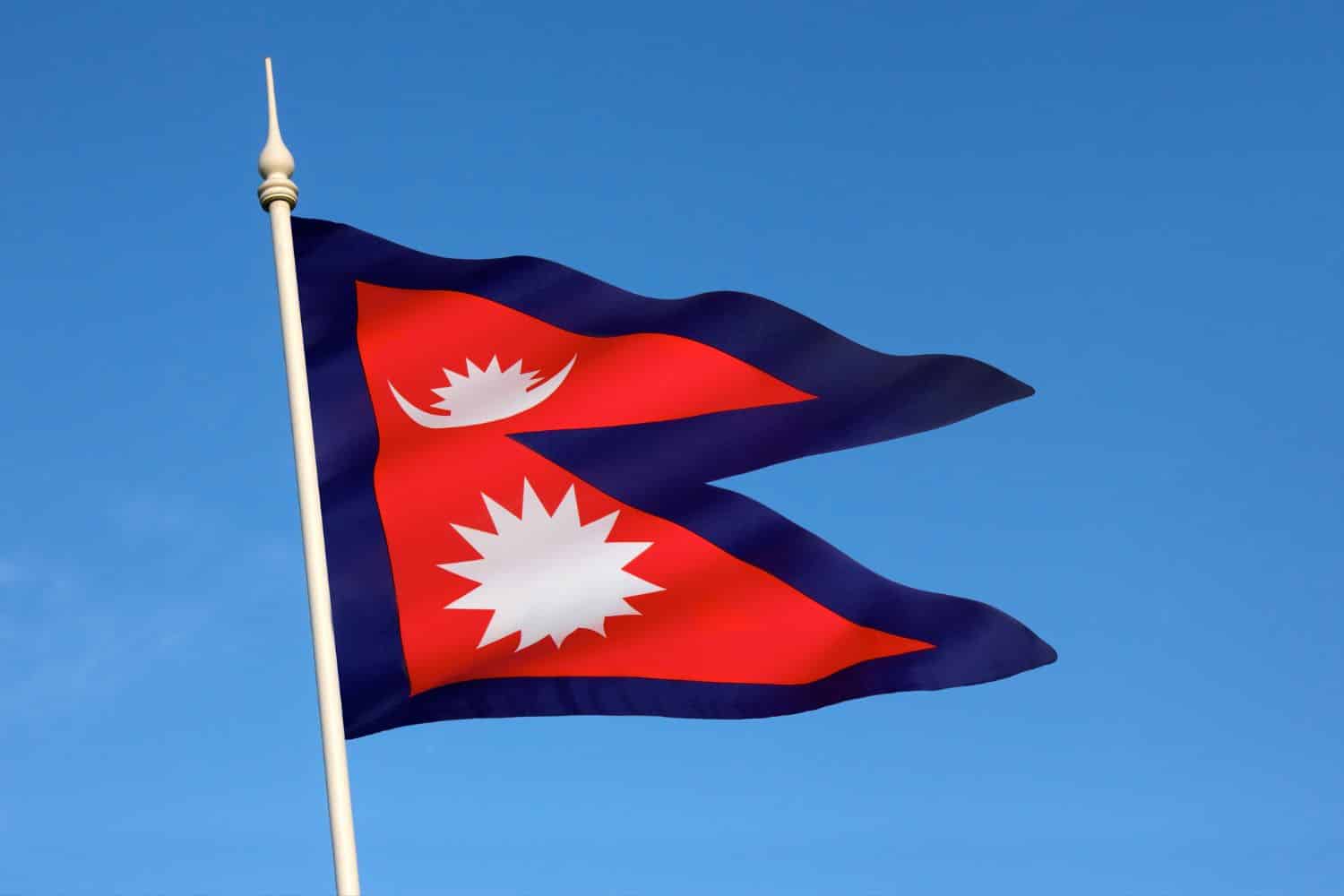
The flag stands as a powerful symbol that encapsulates the cultural significance and spirit of the nation. Its design consists of two triangular shapes with a moon in the upper section and a sun in the lower section. The crimson color symbolizes bravery and valor, honoring the sacrifices made by the Nepali people throughout history. The blue border represents peace and harmony. The celestial symbols of the sun and moon have historical and cultural significance, representing the hopes and aspirations of the people and the permanence and consistency of Nepal.
The history of the flag is intertwined with Nepal’s rich heritage and its unique status as the world’s only non-rectangular national flag. Its design reflects the Himalayan nation’s resilience and unity.
Beyond its aesthetics, the flag from Nepal carries deep symbolic meanings. The colors reflect the values and aspirations of the Nepali people, symbolizing bravery, peace, and harmony. The sun and moon symbols highlight the nation’s deep-rooted history and cultural significance, reflecting the balance and continuity of life. It embodies Nepal’s cultural heritage and serves as a reminder of the nation’s resilience and unity.
National Flag Etiquette and Protocol

Respecting the proper usage and display of the Nepali flag is of utmost importance. Understanding flag etiquette is essential, especially during national events and ceremonies. Learn about the protocols governing the handling, hoisting, and lowering of the flag. Discover the appropriate procedures for retiring or handling damaged flags, ensuring they are accorded the respect they deserve.
- Proper Handling: The Nepali flag should be handled with care and respect, ensuring it is not allowed to touch the ground or floor. It should be held upright and not dragged.
- Hoisting and Lowering: When hoisting the flag, it should be raised briskly and lowered ceremoniously. It is customary to hoist the flag at sunrise and lower it at sunset, although this may vary depending on the occasion or specific guidelines.
- Displaying the Flag: The Nepali flag should be displayed with the two triangular sections properly oriented, with the crimson color dominant and the sun and moon emblems visible. It should be flown freely and not entangled or obstructed.
- Half-Staff: Lowering the flag to half-staff is a gesture of mourning or respect. This should be done on specific days of remembrance or when directed by authorities to honor national tragedies or the passing of significant figures.
- Flag Retirement: When a Nepali flag becomes damaged, torn, or worn out, it should be retired in a dignified manner. This can involve burning it in a respectful and solemn ceremony, following appropriate guidelines and local regulations.
- Flag Size and Placement: The size of the Nepali flag displayed should be proportionate to the size of the flagpole or display area. It is recommended to consult local guidelines or authorities for specific rules regarding flag size and placement.
- Respectful Disposal: If a flag cannot be retired through burning, it should be disposed of in a respectful manner. This can involve burying it or handing it over to authorized organizations that specialize in flag disposal.
Interesting Facts and Trivia
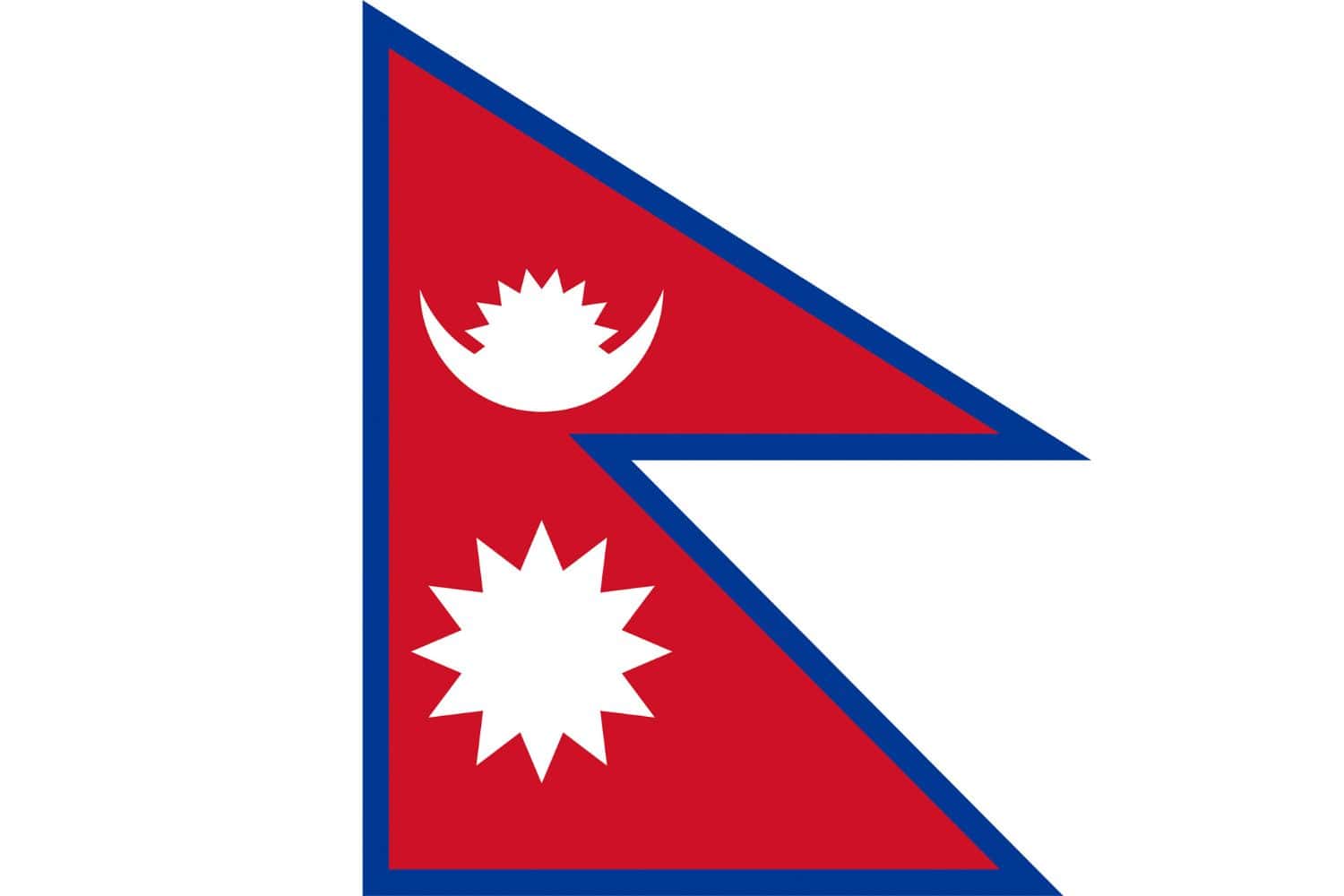
Embark on a journey of fascinating facts and lesser-known trivia about the Nepalese flag. Discover unique features within the flag’s design that hold hidden symbolism. Uncover stories of famous incidents or events involving the flag that have left an indelible mark on the nation’s history and identity.
Rich Tapestry of History
- 1768: The current flag of Nepal, with its distinct double-pennon shape, is believed to have its origins around this time, symbolizing the unity and aspirations of the Nepalese people.
- Colors and Symbolism: The crimson color represents bravery, valor, and sacrifices made by the Nepalese people, while the blue border symbolizes peace and harmony.
- Moon and Sun: The celestial bodies on the flag represent the hopes that Nepal will have the same longevity as the sun and the moon, also indicating the varied climates of Nepal.
- National Identity: The flag embodies Nepal’s rich history, cultural heritage, and the nation’s ongoing pursuit of unity, prosperity, and harmony.
These historical facts highlight significant moments in the history of the Nepalese flag, showcasing its role in shaping Nepal’s national identity and symbolizing its struggles and aspirations throughout the years.
Flag-Related Symbols and Emblems
A flag is not alone in representing the nation’s identity. Explore additional national symbols and emblems closely associated with Nepal, understanding their significance and how they relate to the flag. Delve into their historical and cultural roots, further enriching your understanding of Nepal’s heritage. It’s easy to travel and make a Nepal tour to visit the country’s best destinations.
Symbolisms of the Nepal Flag
The flag of Nepal holds several symbolic elements that represent the nation’s history, values, and aspirations. Here are the symbolisms of the Nepal flag presented in itemized form:
- Red Color: Represents bravery, valor, and the sacrifices made by the Nepali people throughout history.
- Green Color: Symbolizes hope, renewal, and the fertile landscapes of Nepal.
- Five-Pointed Star: Represents the Seal of Solomon, holding historical and cultural significance in Nepali tradition and symbolizing unity and tradition.
- Flag’s Design: Reflects Nepal’s aspirations, cultural heritage, and unity among the Nepali people.
- National Identity: The flag serves as a powerful symbol that unifies the Nepali people, reminding them of their shared heritage and cultural identity.
- National Aspirations: Through its design and elements, the flag embodies the aspirations and values of the Nepali nation, including bravery, hope, unity, and tradition.
These symbolisms in the flag contribute to the country’s sense of identity and pride, reflecting its historical journey and cultural significance.
Flags of Similar Countries or Regions
Examining the flags of neighboring countries or regions can provide intriguing insights into Nepal. Compare and contrast the flags, exploring similarities in design, colors, or symbolism. Uncover historical and cultural connections between flags, shedding light on shared influences or distinctive identities.
Nepali Flag vs Chinese Flag
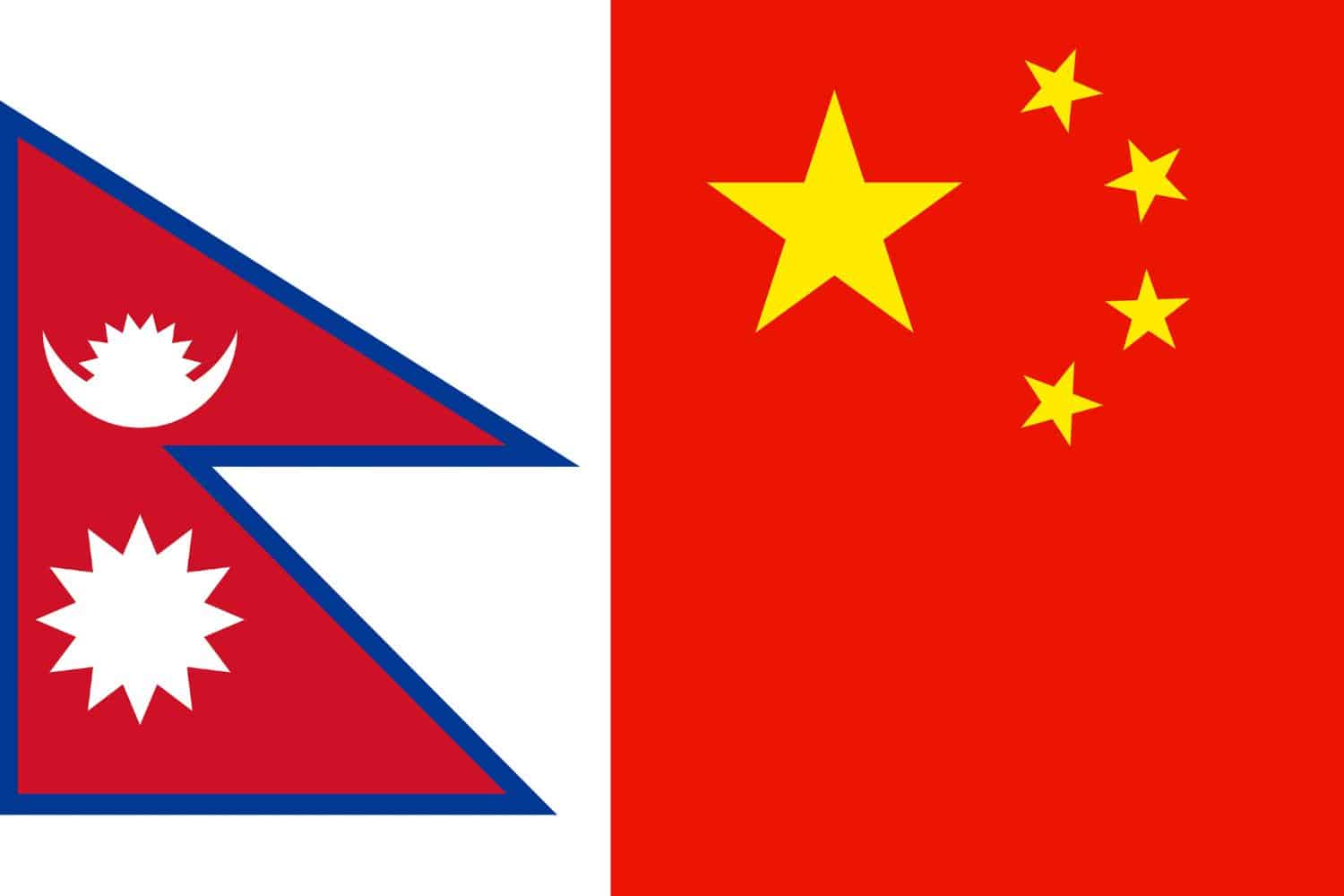
Similarity: Both flags have a red background, symbolizing bravery.
Difference: The Chinese flag features five yellow stars, with one large star and four smaller ones in an arc. The Nepali flag has a unique double-triangle shape with the moon and sun emblems.
Nepali Flag vs Indian Flag
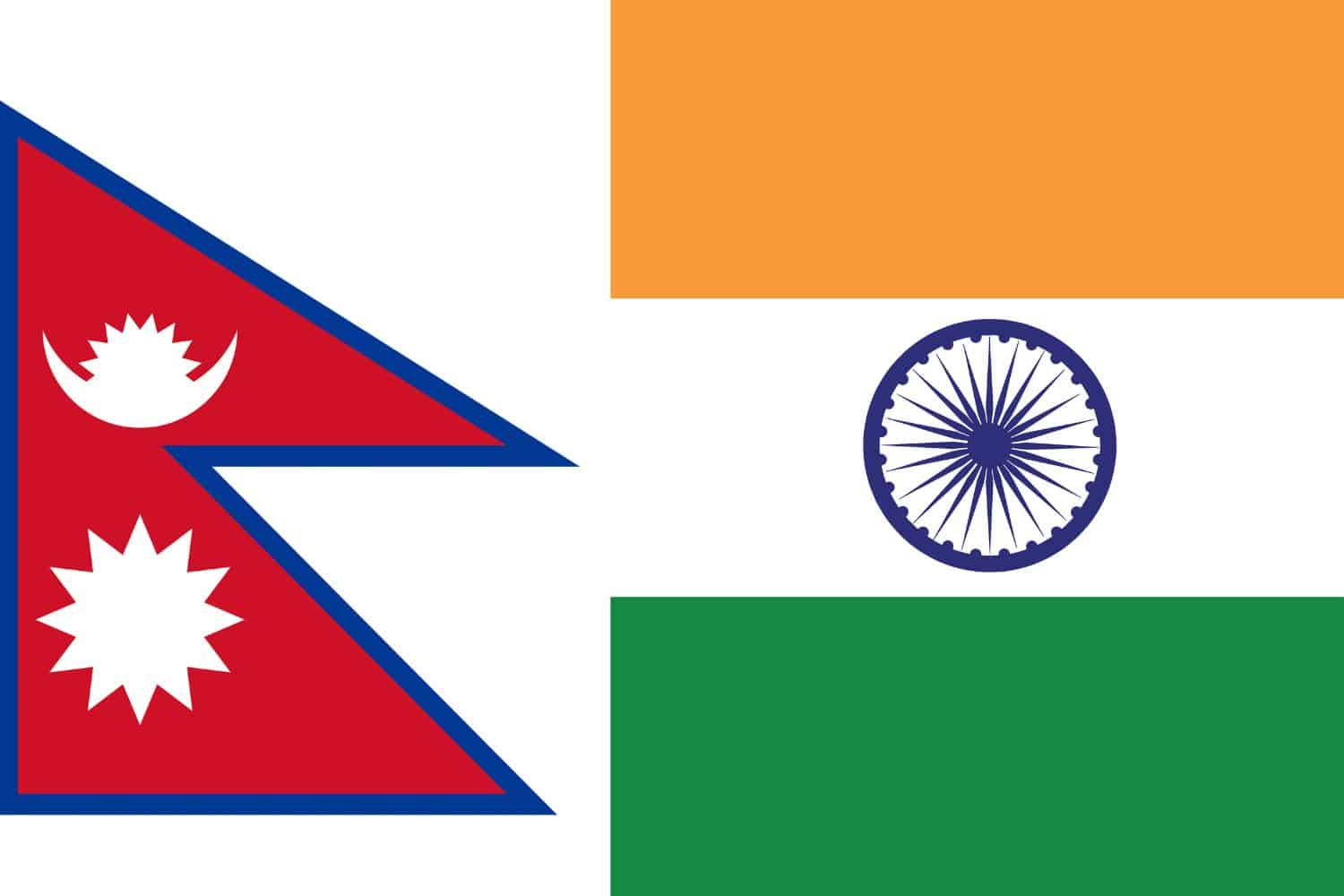
Similarity: Both flags incorporate a deep saffron color.
Difference: The Indian flag is a horizontal tricolor of saffron, white, and green with a navy blue Ashoka Chakra in the center. The Nepali flag is a double-triangle with the moon and sun emblems.
Nepali Flag vs Bhutanese Flag
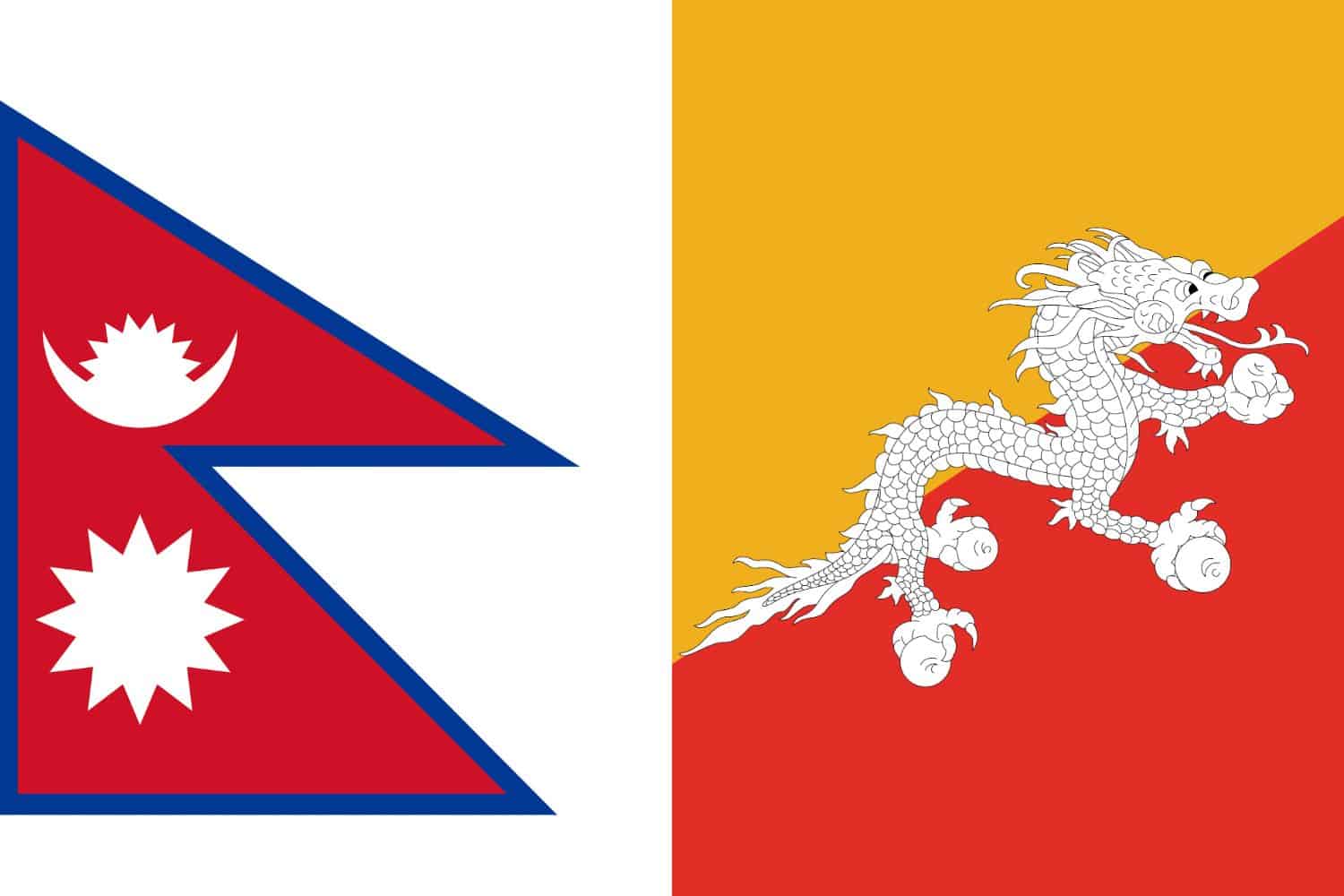
Similarity: Both flags feature red and yellow colors.
Difference: The Bhutanese flag has a white dragon across a diagonal split of yellow and orange. The Nepali flag showcases a double triangle with the moon and sun emblems.
Nepali Flag vs Bangladeshi Flag

Similarity: Both flags have a predominant red symbol in the center.
Difference: The Bangladeshi flag is green with a red circle in the middle. The Nepali flag is a double-triangle with the moon and sun emblems.
Nepali Flag vs Pakistani Flag
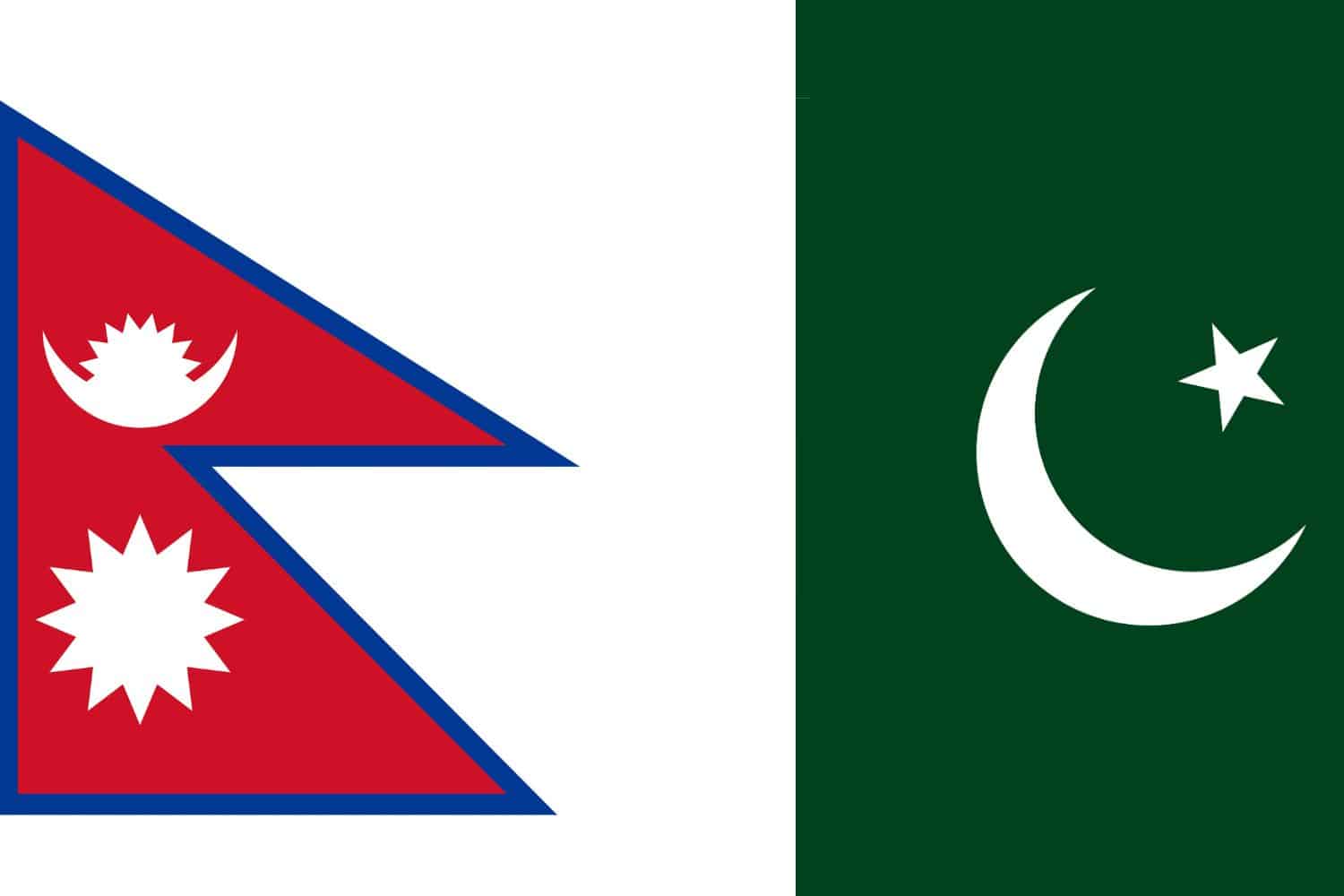
Similarity: Both flags use a combination of green and white.
Difference: The Pakistani flag is a green field with a white vertical stripe on the hoist side a white crescent moon and a five-pointed star in the center. The Nepali flag is a double-triangle with the moon and sun emblems.
Nepali Flag vs Tibetan Flag (of the Tibet Autonomous Region)
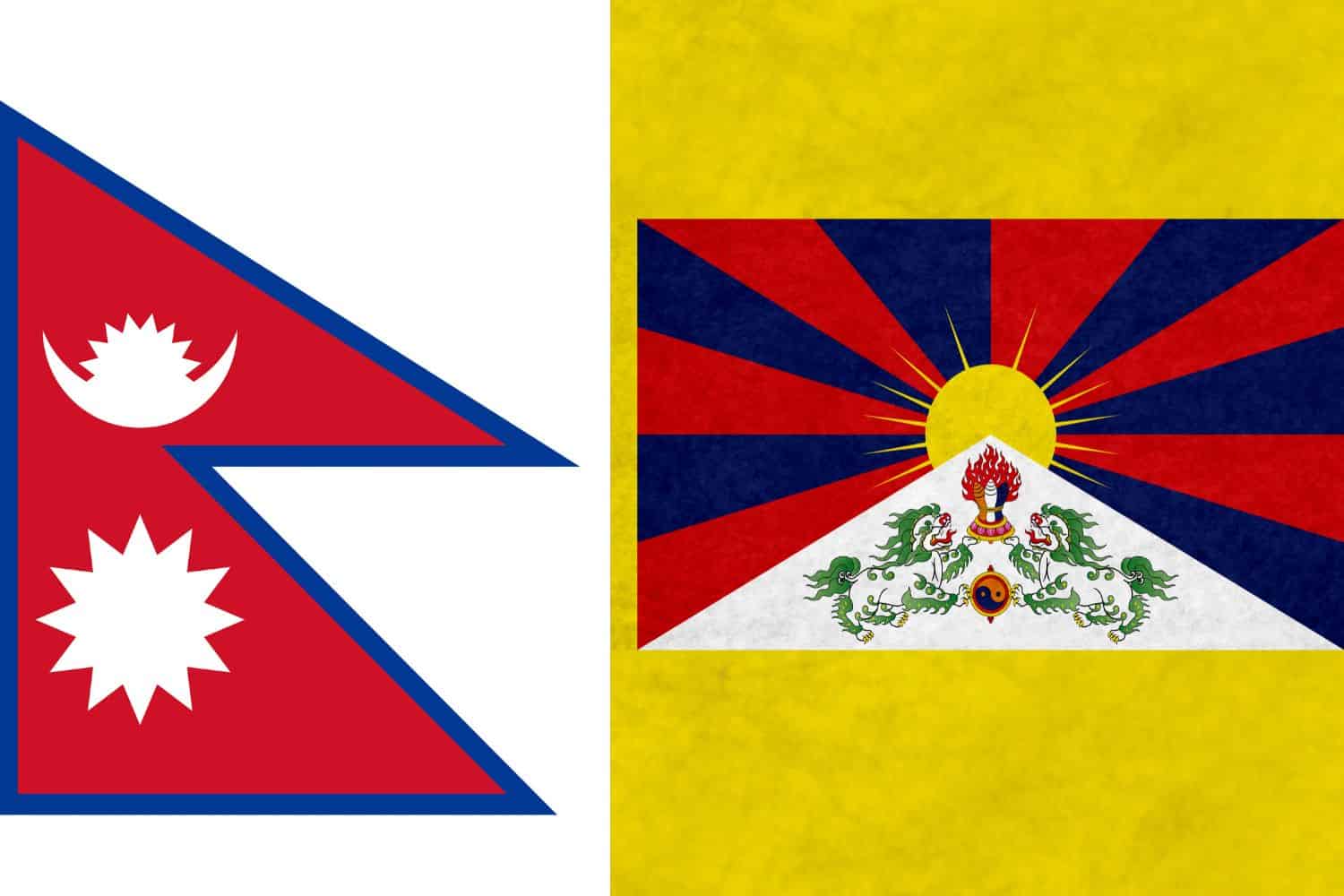
Similarity: Both flags feature combinations of bright colors.
Difference: The Tibetan flag has a mountain, two snow lions, and the sun, with a backdrop of blue and red stripes. The Nepali flag is a double-triangle with the moon and sun emblems.
Frequently Asked Questions (FAQs)
Discover answers to common questions related to the Nepal flag picture. From its historical origins to the symbolism behind its elements, find concise and informative responses that address inquiries commonly posed by those curious about Nepal’s flag.
Why does Nepal have a non-rectangular flag?
The flag’s double-pentagon shape is a reflection of Nepal’s unique identity and is believed to symbolize the Himalayan Mountains.
What do the sun and moon symbols represent?
The sun and moon are said to represent different Nepalese dynasties, as well as the hope that Nepal may have the same longevity as the sun and moon.
Why are there 12 rays on the sun in the flag?
The 12 rays of the sun symbolize the twelve months of the Nepali calendar.
What do the colors on the flag signify?
The crimson/red color is a reflection of the brave spirit of the Nepalese people, and the blue border signifies peace and harmony.
Is there any religious significance to the flag?
The sun and moon symbols are also associated with different Nepalese deities and represent the country’s cultural connection to Hinduism and Buddhism.
When was the current design of the Nepali flag adopted?
The current design of the flag was adopted on December 16, 1962, when the constitution of Nepal was implemented.
What is the meaning of the two triangles in the flag?
The two triangles symbolize the Himalayan Mountains and represent the two major religions, Hinduism and Buddhism.
Has the design of the Nepali flag changed over the years?
Yes, the design has seen several variations throughout history, especially concerning the depiction of the sun and moon. The current design was standardized in 1962.
How is the flag of Nepal raised, given its unique shape?
Despite its unique shape, the flag is raised just like any other flag on a pole. It’s attached at the hoist side and flown with the broader section on top.
Are there any specific rules for displaying or handling the Nepali flag?
Yes, like many national flags, the Nepali flag should be treated with respect. It should not touch the ground or be used for commercial purposes without permission. The flag is also displayed with prominence during national holidays and important state functions.
More About Nepal
[the-post-grid id=”50402″ title=”Nepal Main page”]
